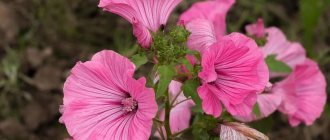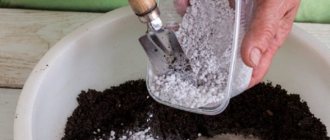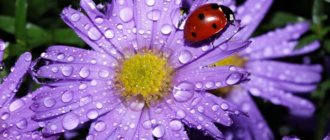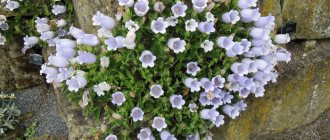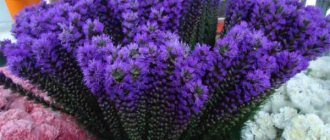Euphorbia marginata or Mountain snow is also called Euphorbia marginata. They came up with this name because its flowers and foliage resemble beautiful snow globes. It has green leaves edged with white. Euphorbia fringe began to be grown in the 19th century.
It grows naturally in the mountains of North America.
This plant is an annual. Attention! Euphorbia Mountain Snow is poisonous; the leaves and stems contain a milky sap that has poison - euphorbine.
Plant characteristics
The photo shows that milkweed has straight stems with many faded green oval leaves. When the plant begins to bloom, a wide white edge appears on the leaves. The leaves can be either pointed or round. It has small, inconspicuous flowers, they are light. The stems are up to 80 cm in height.
Due to the poisonous milky sap that is found on the foliage and stems, the plant should be cared for carefully.
Bloom
The flowering period begins in July and ends with the onset of the first frost.
The flowers are small and white.
An amazing feature of “early snow” is that at the time of flowering, a bright white border appears on the upper leaves located under the unsightly flowers.
The plant appears to be decorated with huge caps of flowers.
This magical transformation justifies one of its names - “rich bride”.
How to care for the Mountain Snow variety
Euphorbia fringe is an unpretentious crop; planting and caring for the plant is easy; even a beginner can grow it.
Watering the plant
The crop should be watered moderately; the plant should not be overwatered.
Important! Mountain snow can survive drought, but will die if it gets too wet.
In summer, water once a week so that the soil is slightly moistened. The crop grows actively when the soil is dry. If the moisture stagnates, the plant’s rhizomes rot.
In winter, in an apartment, the plant is watered with a minimum amount of water; this is done when the soil is completely dry. The plant is not sprayed. It easily tolerates proximity to heating radiators.
Lighting and temperature
The plant loves light and warmth. The air temperature should be +23-24°C. In summer cottages, spurge grows right up to frost. But it is planted in the flowerbed in the spring as an annual.
Important! The crop grows poorly in shade; it is planted in the most illuminated area. And in the house it is placed on the southern windowsill.
But mountain snow can also grow in somewhat shaded places.
Soil and plant nutrition
The culture can take root on sandstone and rocky soil, but it still likes fertile soils.
The soil for the plant is made light, loose, fertile; the soil should be slightly acidic.
A thin layer of agroperlite is poured onto the bottom of the pot. The substrate is mixed from sand, leaf and turf soil.
Euphorbia prefers feeding with a solution of 200 g of manure and a bucket of clean water (10 l). Mullein is infused for a day, and then euphobia is poured over it in the evening.
Choosing the right pot for milkweed
Typically, seeds are planted in pots and then seedlings are planted in the area. To do this, take small cups or peat pots.
If you nevertheless decide to plant a garden plant in an apartment, then select wide but shallow pots.
Features of care in winter, rest period
Garden spurge (Euphorbia) - description of multi-flowered, marsh species
By the end of summer, all care procedures are stopped and sanitary pruning begins. For the winter, you don’t have to cover the spurge or simply cover it with dry leaves and soil. in more northern regions they can be covered with spruce branches.
Flowers of edged milkweed
Diseases and pests
The plant rarely gets sick. If not properly cared for, the crop can be affected by fungal diseases. At the same time, the leaves turn yellow and then fall off. Then the plants are sprayed with fungicides.
Pests include:
- spider mites;
- nematodes;
- slugs
To eliminate insects, plants are sprayed with insecticides.
Growing milkweed from seeds
Sowing seedlings
Growing from seeds begins with soaking them for 2 hours in warm water.
When to plant seeds for seedlings?
From late February to mid-April, you can sow seeds indoors in a 12 cm high container filled with soil. For the substrate, make a mixture of loam and sand. Pour the seeds, slightly press them to a depth equal to the diameter of the seeds, and spray them with a spray bottle.
Then the seeds are lightly sprinkled with a mixture of peat and sand. Next, cover with film. Afterwards they are placed in a room with a temperature of 17-18 degrees. Remove the film daily to ventilate the plantings and monitor soil moisture. The first shoots hatch in 1-2 weeks. Then the film is removed.
From the video you will learn how to do it correctly:
How to dive?
When the seedlings grow 1-2 true leaves, they are planted in separate cups.
Sowing in open ground
At the end of May, seeds are sown on the plot. This is done when return frosts no longer appear. The seeds are planted to a depth of 6 cm. After 2 weeks, sprouts will sprout.
How to plant seedlings?
By the end of May, when the soil has finally warmed up, the seedlings are placed in a sunny area. A space of 30 cm is made between the planting holes. The stems of young milkweed are faded green, with white hairs visible on them, then the stems acquire a brownish-green tint.
You should not plant the crop in an area with close groundwater.
Is it necessary to pinch in the flowerbed?
You can pinch the top of the plants, this makes their growth more active.
Reproduction
At home, spurge propagates in 3 ways:
- seeds;
- cuttings;
- dividing the bush.
The soil for flower propagation should consist of the following components in equal proportions:
- sand;
- leaf soil;
- peat.
Cuttings
Pros:
- Easy and fast.
- You can propagate in this way at any time of the year.
Cons: Extra caution is required as milkweed sap is highly poisonous.
Important! When propagating from cuttings, you must use protective gloves.
Step-by-step diagram:
- pinch off a leaf with a stem;
- let the milky juice drain;
- Next, the cut should be treated with a stimulator;
- plant the cuttings in moist soil;
- cover with transparent film or cap.
Seeds
The advantages of growing “early snow” from seeds: you can get several plants at once.
Minuses:
- Only fresh seeds can be used.
- It is not a very fast method and requires some effort.
Step-by-step diagram:
- The seeds of milkweed are round, about 2 mm in diameter, so they need to be carefully sprinkled with the same thin layer of soil.
- Thoroughly moisten the substrate.
- Cover with a glass cap.
Dividing the bush
Pros: easy and fast.
Cons: dividing the bush can only be done when the plant is not blooming and is dormant (winter months and early spring).
Step-by-step diagram:
- Remove the mature plant from the pot.
- Divide the rhizome into several parts.
- Carefully inspect the planting material for rotting areas. Remove unhealthy parts.
- The plant is taken out of the pot and the rhizome is divided into several parts.
- Place the finished divisions in separate pots.
Bordered spurge in landscape design
In flower beds, Mountain Snow looks great next to phlox, ornamental grasses, and monarda. It makes an excellent backdrop for many perennials.
It goes well with hostas that also love bright sunlight. It harmonizes well with crops that have dark foliage, for example, varietal buzulniks.
If you cut it, you can use it to make bouquets, combining it with roses, hollyhocks, delphiniums, and dahlias.
Gardeners plant Mountain Snow because of its unpretentiousness and beautiful decorative leaves. It does not require frequent watering as it tolerates drought easily.
Photo
Looking at the photo, it becomes clear why this flower is popularly called Snow on the Mountain:
The variety of milkweed varieties is enormous - it can be found in the form of a flower, tree or shrub. Some types of milkweed are grown as houseplants. We want to tell you about the different varieties of this amazing beauty. Read about varieties such as Mile, Triangular, Garden, Cypress, Jagged, Tirukalli, White-veined, Many-flowered and Wild.

